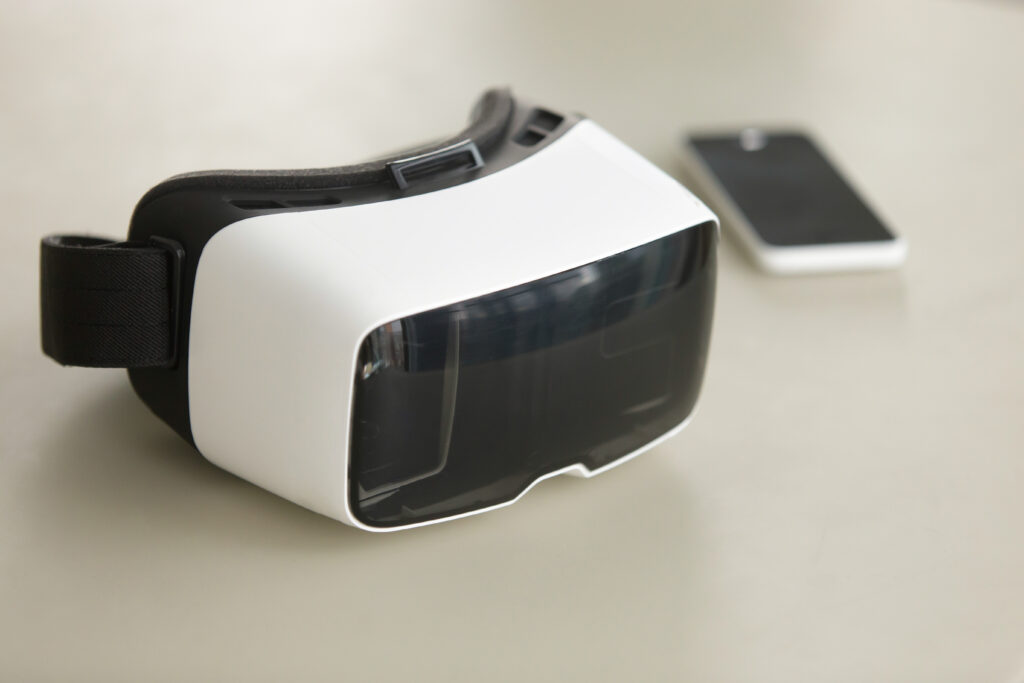Thank you to Verizon Wireless for sponsoring this post.
5G wireless technology is here. Well, sort of. It exists, and we are starting to see platforms and devices designed to take advantage of it, but the reality is that we are still in the very early stages of rolling out 5G technology. You will know when it really arrives, because it has the potential to fundamentally change the way you use technology and interact with the world.
Baby Steps to Quantum Leaps
On the one hand, 5G is just the next step in the evolution of broadband connectivity. I realize I am dating myself, but I first connected to the internet using a 1200 baud modem with my Commodore 64. I remember how awesome it was to go from 1200 baud to 19.2Kbps modems. When 56k modems came along, it was a game changer—or at least it seemed like one at the time. In retrospect, it was a baby step.
There have been many other baby steps along the way as we moved from dial-up to DSL and cable modems. Most of the time, the improvements in technology and connectivity were incremental. It was easy to be satisfied with the speed you already had until you experienced the faster speed. Then it was difficult to go back. Regardless, though, each new iteration on the technology was just another small step.
When wireless data came along to work alongside of and eventually compete with the traditional broadband technologies, it was like starting over again with the 1200 baud modem. Over time, we went from 1G, to 2G, to 3G, and then 4G LTE. As with the connected broadband, the evolution of mobile connectivity has also been more or less incremental. The advent of 3G made mobile access to the internet functional, and 4G LTE opened up new possibilities for mobile devices—but they were still all baby steps.
In his keynote at CES in January, Hans Vestberg, CEO of Verizon, described 5G as a quantum leap. Yes. It is still an evolution of the technology that stands on the shoulders of the versions that came before it—but 5G isn’t just a faster version of 4G. 5G has the potential to change the world and how we experience it.
Humanability and the Fourth Industrial Revolution
Vestberg also talked about a term Verizon has adopted: Humanability. He noted that we are entering into the fourth industrial revolution. The previous turning points over the last century or so have all been about things. The Industrial Revolution was about machines. The Space Age was about science and rockets. The Information Age was about computers and data. Vestberg believes that 5G will flip the dynamic around. He explained that we are entering the age of humans, and that 5G will not be about what technology can do, but what people can accomplish with the technology.
At a very basic level, 5G is, in fact, just a better and faster version of 4G. The thing is, it is so much better and so much faster it has the potential to fundamentally transform our world. Vestberg spoke of the 8 primary currencies—or capabilities—that 5G provides: peak data rate, mobile data volume, mobility, connected devices, energy efficiency, service deployment, reliability, and latency. I won’t go into detailed explanations of all of them, but with 10Gbps data transfer speeds, latency less than 5ms, and energy efficiency that consumes only about 10 percent of current technologies, the potential is enormous.
Vestberg invited a number of Verizon partners and customers to join him on stage to talk about how 5G will impact their industries. From changing the way news is captured, delivered and consumed, to enabling drones to be piloted beyond the visual line of sight or around the world, to improving the way doctors access data and perform procedures on patients, there are a wide variety of ways that 5G wireless connectivity will affect companies and consumers across all industries.
One area where I see the most potential, though, is education. With 5G wireless connectivity and the rapidly evolving technology we have, education will no longer be limited by physical location…or time. Students will be able to learn from the best teachers—even if they’re on the other side of the planet. Instead of just reading about an event like the first flight by the Wright Brothers at Kitty Hawk, North Carolina, or looking at artifacts in a museum, kids will be able to immerse themselves in virtual reality or augmented reality simulations and experience the event as if they were actually there witnessing it.
Bringing J.A.R.V.I.S. to Life
I grew up watching Star Trek. It has been amazing to see so many of the concepts and technologies that were once science fiction become a reality. Just a decade or two ago, things like tablet computers, universal translators, and wireless communications were just a dream created in someone’s imagination. Now they’re part of mainstream, everyday life.
One of the science fiction concepts that seems very valuable is the idea of a digital virtual assistant. There have been many attempts, but they are mostly rudimentary. The vision of speaking conversationally with the ship’s computer on the Starship Enterprise or interacting the way Tony Stark does with his J.A.R.V.I.S. (an acronym for Just A Rather Very Intelligent System) artificial intelligence is awesome, but easier said than done.
We have been building up to it, though, since the dawn of the internet. Ultimately, it is simply about being able to access all available information through natural language voice commands. Now, we have things like Siri in Apple smartphones and tablets, and Alexa in Amazon connected home devices. Both of these are awesome, but as anyone who has tried to use them extensively will tell you—there is certainly room for improvement.
5G can be that improvement. Of course, there is more to it than the speed of the broadband connection. The digital virtual assistants can only answer with information from the pools of data they have access to, and they are limited by the processing capacity on the server end. But, 5G represents a quantum leap in the data throughput that will transform these nascent technologies into significantly more functional services that you can speak to and interact with to ask questions and find information as naturally as speaking with your best friend.
Welcome to the Future
There are a number of amazing ways that I can envision 5G improving or changing our world. The reality, though, is that I probably have no clue what the truly transformative innovations will be. They don’t exist yet, and they are beyond my own creativity and imagination.
Verizon is hoping to foster those innovations, though, with the Built on 5G Challenge. Verizon is inviting pioneers to submit their creative ideas for how to leverage 5G. The individuals or companies will have access to work with the Verizon 5G Lab to develop the idea, and Verizon will provide up to $1 million USD in seed money to help.
Faster broadband is awesome. Downloading an entire movie over a wireless connection in 10 seconds instead of 5 minutes is great, but that doesn’t even scratch the surface of what’s possible. I’m looking forward to seeing what we humans can come up with for this fourth industrial revolution.
My blog may contain links to other websites. I am not responsible for the privacy policies of those other websites. When you click on a link, your information may be collected by those websites so I encourage you to read their privacy policies.
- Navigating Cybersecurity Complexity - July 18, 2025
- AI Voice Clones and Mobile Phishing: The Cyber Threats You’re Not Ready For - July 11, 2025
- Rethinking Cloud Security for the Evolving Threat Landscape - July 11, 2025




Comments are closed.